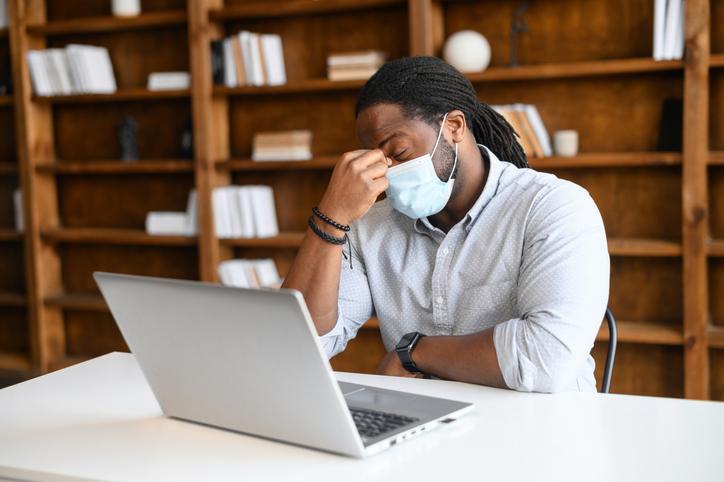
Tips for facing Year Three of the pandemic
Realize that public-health cautions may continue to ebb and flow, said Anne Browning, UW Medicine's assistant dean for well-being.
It’s understandable: It’s been two years, and you’re exhausted.
So now that we’re facing Year Three of the pandemic, with continued questions about boosting, masks and how and when to meet up with loved ones, there might be a temptation to mentally throw in the towel.
One way to cope is to realize that public-health cautions will ebb and flow, and to be prepared for that, said Anne Browning, assistant dean for well-being at the University of Washington School of Medicine.
“I think a big piece of this is recognizing that there will be these moments when we’re going up against these big waves of community spread,” she said “But we also need to know that we will cross those waves and come down the back side, where we will have the opportunity to travel more and to see people and be in closer contact.”
This ebb and flow may mean not going to the gym now, or if you do, wearing an N95 mask during workouts. The question of whether to eat in restaurants or get food to-go may persist with the incidence of community spread or a new variant.
“I would say our family leaned more into doing takeout food last winter and this winter as well,” Browning said. “We really wanted to support the restaurants around us because they are under pressure, as well.”
Eating outside or huddling outside your favorite cafe with a warm cup of tea or coffee are good options, she said, adding, “There is no bad weather, there is just bad gear."
Having an event, however small, on your calendar to look forward to will help keep hope alive. And if that circled week on the calendar was originally a trip to a distant beach, consider changing that plan to a snow skiing vacation or a less crowded area of the country.
“My wife and I were just talking about this,” she said. “We weren’t able to go to the sunny beaches last winter, so I bought a pair of skis and we got ski passes. This was a way of experiencing the Pacific Northwest and a place where I lived most of my life that I hadn’t sampled before.”
Browning also would say that people are tougher and more flexible than they know or expect. “If in March 2020 we saw the community spread numbers of January 2022, I think our minds would have exploded,” she said.
One might consider: “Wow, I really have lived in a pandemic for two years, we’ve managed to learn, adapt and thrive. Kids are figuring out how to wear masks and the schools are figuring out how to stagger lunches."
And rapid tests have enabled us, with some caveats, to meet up with friends again, so “the fear that came with COVID a year and half ago seems to have been mitigated,” Browning said.
Given the vaccines, boosters, rapid tests and what we know now about COVID-19 , “I’m pretty hopeful that we won’t go back to 2019, but come this year, 2023, 24, 25, I believe we’re going to feel more at ease in a world existing with COVID,” she said.
– Barbara Clements, 253-740-5043, bac60@uw.edu
Downloadable Media Resources:
For details about UW Medicine, please visit https://uwmedicine.org/about.